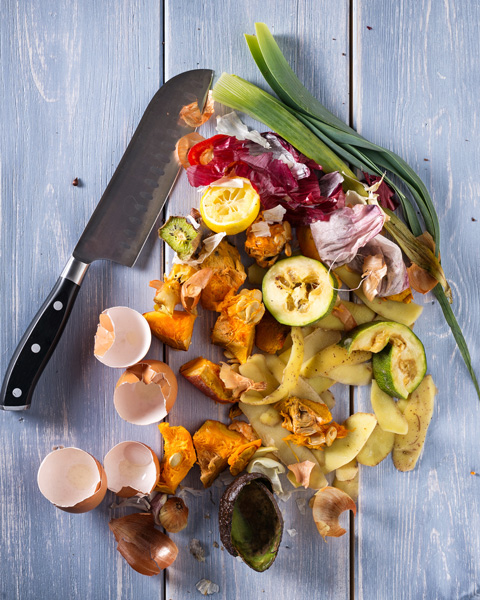Compost is decomposed organic matter that is full of nutrients and can be used as a fertilizer in planting soil. Compost is a great way to recycle produce that would otherwise be considered waste. Making your own compost bin is a simple way to reduce food waste, while also feeding your garden.
Materials
- Container and lid – This can be anything from a milk jug to a mini or full-sized trash can
- Catch tray
- Soil
- Shredded newspaper
- Hammer and nails
- Power drill
- Scissors
Directions
- Find the optimal location for your compost bin – many prefer to keep their bin near their trashcans or under the sink.
- Note: Keep the bin in a dry location to prevent mold.
- Cover the catch tray with shredded newspaper.
- Use the power drill to create holes around the top of the bin and in the lid.
- Note: Certain types of containers may require a different tool to create the necessary holes.
- Place the bin on top of the newspaper covered catch tray.
- Fill the bin about a quarter of the way with soil.
- Add a layer of shredded newspaper on top of the soil
- Begin composting!

Tips on How to Compost
- When adding food scraps be sure they are as small as possible.
- Add shredded newspaper every so often after adding food scraps, so that you may be sure to keep a wet vs. dry balance.
- Mix the compost at least once a week and add about one half a scoop of new soil so that the produce breaks down evenly.
- The bin shouldn’t give off a rotten smell, so if it does this means the compost may be off balance and the bin is in need of adjustments. This could be a need for more holes for air flow or additional dry newspapers.
What to Compost
- Organic food scraps including fruits, vegetables, grains, etc.
- Small paper pieces including shredded newspaper, paper towels, napkins, etc.
- Coffee grounds
What NOT to Compost
- Meat (includes poultry)
- Dairy
- Bones
- Food wrappers
- Plastic

